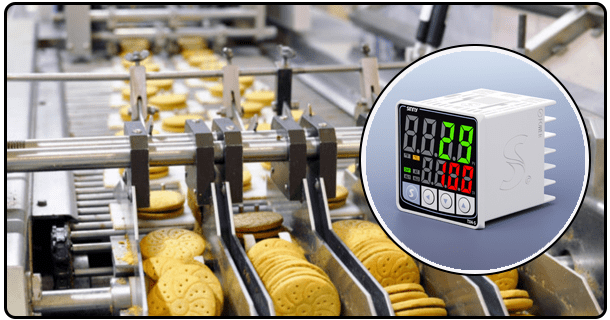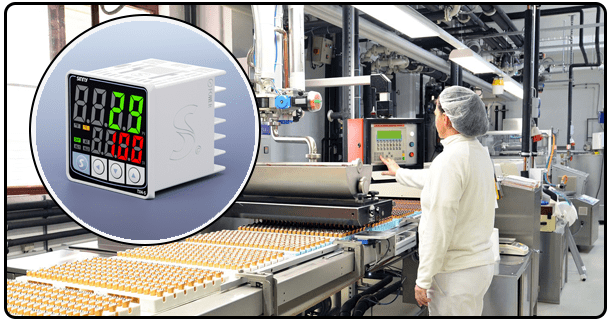Temperature Control System and Controller: Key Differences
Gain insight into the key differences between temperature control systems and controllers to select an apt solution that meets all your requirements. Before deciding, explore their components, applications, precision, cost and energy efficiency features.
1. Introduction
Temperature regulation is integral to various industries, providing ideal conditions for processes, products and environments. Two tools widely utilised for temperature regulation are temperature control systems and temperature controllers - although their similarities might initially seem apparent, each serves distinct functions with distinct features that make selecting the optimal solution important when meeting individual needs.
2. Definition and Function
Temperature Control System: A temperature control system is an integrated setup designed to maintain specific temperatures within any environment, such as HVAC (Heating, Ventilation and Air Conditioning) systems or environmental chambers. Such systems often utilise various components working together towards precise temperature regulation.
Temperature Controllers: On the other hand, a temperature controller is an electronic device designed to regulate temperatures by comparing actual readings against an ideal setpoint temperature and making adjustments accordingly. They're often employed in laboratory equipment, industrial machines and home appliances, typically using on/off control, proportional control or PID (Proportional-Integral-Derivative) control algorithms to maintain desired temperatures.
3. Components and Mechanisms
Temperature Control Systems: These systems contain several key elements, including sensors, control units, heating/cooling elements and heat exchangers. Sensors measure the current temperature before sending this information back to a control unit, which makes necessary adjustments and determines any required heating or cooling elements; heat exchangers then facilitate efficient thermal transfer for smooth operations.
Temperature Controller: A temperature controller typically comprises three components: a sensor, a control unit and an output device. A sensor detects current temperature data relayed to the control unit, which compares it with setpoint temperatures to make adjustments; once calculated, the device, such as a heater or cooler, acts to achieve the desired temperatures - advanced controllers may offer additional functionalities like alarms or data logging.
4. Applications
Temperature Control Systems can be found across many industries, such as HVAC, manufacturing, food and beverage production, pharmaceuticals and healthcare. HVAC uses temperature control systems to create comfortable indoor climates by controlling air temperature and humidity; manufacturing needs them for chemical reactions, material curing processes as well and product storage purposes, while food and beverage producers utilise them for product quality assurance purposes and healthcare facilities use them to maintain sterile environments in which to store sensitive material.
Temperature Controllers can be found everywhere, from industrial processes to research laboratories, from machinery operation and oven/furnace maintenance to maintaining precise conditions for experiments/tests in research labs and home appliances such as ovens/refrigerators/water heaters for consistent and reliable temperature regulation. Temperature controllers have become an indispensable tool of modern life and play an integral part in both. In industrial settings, they regulate machinery like ovens/furnaces to ensure efficient and safe functioning; research laboratories use temperature controllers in keeping precise conditions necessary for experiments/testing, while temperature controllers play an essential part in maintaining precise conditions necessary for experiments/testing in research laboratories. In contrast, home appliances like ovens/refrains/water heaters can use consistently reliable temperature regulation, ensuring efficient and safe functioning and consistent and secure operation.
5. Precision and Control
Temperature Control System: These sophisticated systems offer comprehensive temperature management solutions suitable for large areas or multiple zones, from buildings or production lines through storage facilities or warehouses, while their advanced sensors and algorithms facilitate precise temperature regulation for various applications. They ensure consistent temperatures across entire structures or even multiple zones, ensuring consistent conditions across production lines or storage facilities.
Temperature Controller: Temperature controllers offer precise control of various processes and equipment. They feature tight temperature tolerances, making them suitable for accurate temperature regulation applications. Advanced algorithms, like PID control, enable these temperature controllers to achieve and maintain the desired setpoint with minimum variance from it.
6. Cost and Complexity
Temperature Control Systems: With multiple components that must work seamlessly together to function as one cohesive whole, temperature control systems tend to be complex and more costly than their simpler counterparts. They must be carefully designed, installed, and maintained. Hence, they continue operating optimally while managing temperatures across large spaces or multiple zones - an invaluable asset in industries with demanding temperature regulation needs.
Temperature Controllers: Regarding cost and ease of implementation, temperature controllers tend to be far cheaper and simpler to implement compared to full temperature control systems. They're designed for specific tasks and easily integrated into existing equipment - without offering as wide-ranging temperature management as control systems would but providing greater precision and usability as targeted applications require.
7. Energy-Efficient
Temperature Control Systems: These control systems can optimise energy usage across large applications by maintaining precise temperature regulation. By eliminating temperature fluctuations and optimising thermal transfer efficiency, these temperature controls help minimise energy use and operational costs while optimising their effectiveness with advanced control algorithms and energy-saving features.
Temperature Controllers: Temperature controllers contribute to energy efficiency by providing precise temperature regulation of individual processes or equipment, maintaining desired setpoints with minimum deviation for reduced need for frequent adjustments and energy waste. Furthermore, using more energy-efficient components and strategies may enhance their performance further.

8. Conclusion
In summary, temperature control systems and controllers offer unique functions and can be best utilised for specific uses. Temperature control systems offer comprehensive temperature management across large areas and multiple zones - ideal for industries requiring extensive regulation needs - while controllers provide precise temperature regulation of specific processes or equipment at cost-effective levels for targeted applications. Understanding their key differences is vital when choosing an ideal solution based on specific requirements.
- Modern Temperature Control Systems: Improve Performance & Efficiency
- Discover How to Design an Effective Temperature Control System: A Comprehensive Guide






















